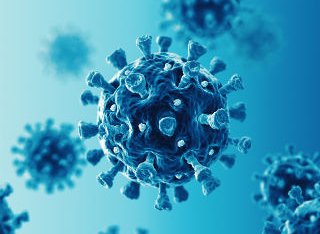
Dr Jim Huggett
About
Biography
Dr Huggett read genetics in Liverpool University followed by a PhD in Cardiff University where he studied the potential role of mechanically regulated genes in bone remodeling. Particularly interested in the application of advanced molecular methods to clinical scenarios he moved to UCL in 2002 to take up a Senior Research Fellow position with Professor Alimuddin Zumla. Here he investigated approaches to diagnose infectious diseases in developing world settings before moving to LGC in 2009. At LGC, which is the UK's designated national measurement institute role for chemical and bio-analytical measurement, he has led a large number of molecular diagnostics, genomics and nucleic acid research projects. This work focuses on high accuracy measurement as well as strengthening the traceability of measurements that underpin legislation, regulation and standardisation. In 2016 Dr Huggett joined the University of Surrey while retaining a joint appointment with LGC, where his focus is on analytical microbiology and diagnosis of infectious diseases.
Research interests
Molecular diagnosis and routes to support translation of preclinical methods to patient care. My interest are in applying the concepts of metrology (the science of measurement) to improve accuracy and reproducibility of molecular analysis and this has enabled me to investigate a wide range of fascinating subjects ranging from pathogen identification and genotyping to the detection of surrogate markers of infection. Research has investigated methodologies ranging from high throughput centralised approaches to point of care.
Research collaborations
Main internal collaboratorsProfessor Graham StewartDr Jose JimenezDr Emma LaingProfessor David BlackbournProfessor Mike Taylor
Main External Collaborators• Professor Stephen Bustin, Anglia Ruskin University, http://www.anglia.ac.uk/medical-science/about/our-staff/stephen-bustin• Professor Taane Clark, LSHTM http://www.lshtm.ac.uk/aboutus/people/clark.taane• Dr Vladimir Benes, EMBL http://www.embl.de/services/core_facilities/genecore/members/index.php?…• Dr Jeremy Garson, University College London https://iris.ucl.ac.uk/iris/browse/profile?upi=JAGAR94• Dr Kathryn Harris, Great Ormond Street Hospital http://www.labs.gosh.nhs.uk/research/microbiology-virology• Professor Tim McHugh, University College London http://www.ucl.ac.uk/infection-immunity/research/res_ccm• Professor Martin Taylor, MRC Human Genetics Unit MRC IGMM http://www.hgu.mrc.ac.uk/people/taylor.html
Principal Investigator of the AntiMicroResist consortium https://www.euramet.org/research-innovation/search-research-projects/de…
Affiliations
Committee membershipGenetics Society, http://www.genetics.org.ukCCQM-NAWG, http://www.bipm.org/en/committees/cc/wg/nawg.html
Society membershipsESGMD (ESCMID), https://www.escmid.org/index.php?id=151RSTMH https://rstmh.orgComMet
Principal Scientist at LGC http://www.lgcgroup.comManaging editor of BDQ http://www.journals.elsevier.com/biomolecular-detection-and-quantificat…
Publications
Background: The global COVID-19 pandemic has led to extensive development in many fields, including the diag-nosis of COVID-19 infection by mass spectrometry. The aim of this systematic review and meta-analysis was to assess the accuracy of mass spectrometry diagnostic tests developed so far, across a wide range of biological ma-trices, and additionally to assess risks of bias and applicability in studies published to date. Method: 23 retrospective observational cohort studies were included in the systematic review using the PRISMA -DTA framework, with a total of 2858 COVID-19 positive participants and 2544 controls. Risks of bias and appli-cability were assessed via a QUADAS-2 questionnaire. A meta-analysis was also performed focusing on sensitiv -ity, specificity, diagnostic accuracy and Youden's Index, in addition to assessing heterogeneity. Findings: Sensitivity averaged 0.87 in the studies reviewed herein (interquartile range 0.81-0.96) and specificity 0.88 (interquartile range 0.82-0.98), with an area under the receiver operating characteristic summary curve of 0.93. By subgroup, the best diagnostic results were achieved by viral proteomic analyses of nasopharyngeal swabs and metabolomic analyses of plasma and serum. The performance of other sampling matrices (breath, sebum, sa -liva) was less good, indicating that these protocols are currently insufficiently mature for clinical application. Conclusions: This systematic review and meta-analysis demonstrates the potential for mass spectrometry and 'omics in achieving accurate test results for COVID-19 diagnosis, but also highlights the need for further work to optimize and harmonize practice across laboratories before these methods can be translated to clinical applications. (c) 2021 The Authors. Published by Elsevier Inc. This is an open access article under the CC BY license (http://creativecommons.org/licenses/by/4.0/).
Background Severe acute respiratory syndrome coronavirus 2 (SARS-CoV-2) RNA quantities, measured by reverse transcription quantitative PCR (RT-qPCR), have been proposed to stratify clinical risk or determine analytical performance targets. We investigated reproducibility and how setting diagnostic cutoffs altered the clinical sensitivity of coronavirus disease 2019 (COVID-19) testing. Methods Quantitative SARS-CoV-2 RNA distributions [quantification cycle (Cq) and copies/mL] from more than 6000 patients from 3 clinical laboratories in United Kingdom, Belgium, and the Republic of Korea were analyzed. Impact of Cq cutoffs on clinical sensitivity was assessed. The June/July 2020 INSTAND external quality assessment scheme SARS-CoV-2 materials were used to estimate laboratory reported copies/mL and to estimate the variation in copies/mL for a given Cq. Results When the WHO-suggested Cq cutoff of 25 was applied, the clinical sensitivity dropped to about 16%. Clinical sensitivity also dropped to about 27% when a simulated limit of detection of 10(6) copies/mL was applied. The interlaboratory variation for a given Cq value was >1000 fold in copies/mL (99% CI). Conclusion While RT-qPCR has been instrumental in the response to COVID-19, we recommend Cq (cycle threshold or crossing point) values not be used to set clinical cutoffs or diagnostic performance targets due to poor interlaboratory reproducibility; calibrated copy-based units (used elsewhere in virology) offer more reproducible alternatives. We also report a phenomenon where diagnostic performance may change relative to the effective reproduction number. Our findings indicate that the disparities between patient populations across time are an important consideration when evaluating or deploying diagnostic tests. This is especially relevant to the emergency situation of an evolving pandemic.
A potent and heat-stable tetrodotoxin (TTX) has been found to accumulate in various marine bivalve species, including Pacific oysters ( Crassostrea gigas), raising a food safety concern. While several studies on geographical occurrence of TTX have been conducted, there is a lack of knowledge about the distribution of the toxin within and between bivalves. We, therefore, measured TTX in the whole flesh, mantle, gills, labial palps, digestive gland, adductor muscle and intravalvular fluid of C. gigas using liquid chromatography-tandem mass spectrometry. Weekly monitoring during summer months revealed the highest TTX concentrations in the digestive gland (up to 242 µg/kg), significantly higher than in other oyster tissues. Intra-population variability of TTX, measured in the whole flesh of each of twenty animals, reached 46% and 32% in the two separate batches, respectively. In addition, an inter-population study was conducted to compare TTX levels at four locations within the oyster production area. TTX concentrations in the whole flesh varied significantly between some of these locations, which was unexplained by the differences in weight of flesh. This is the first study examining TTX distribution in C. gigas and the first confirmation of the preferential accumulation of TTX in oyster digestive gland.
